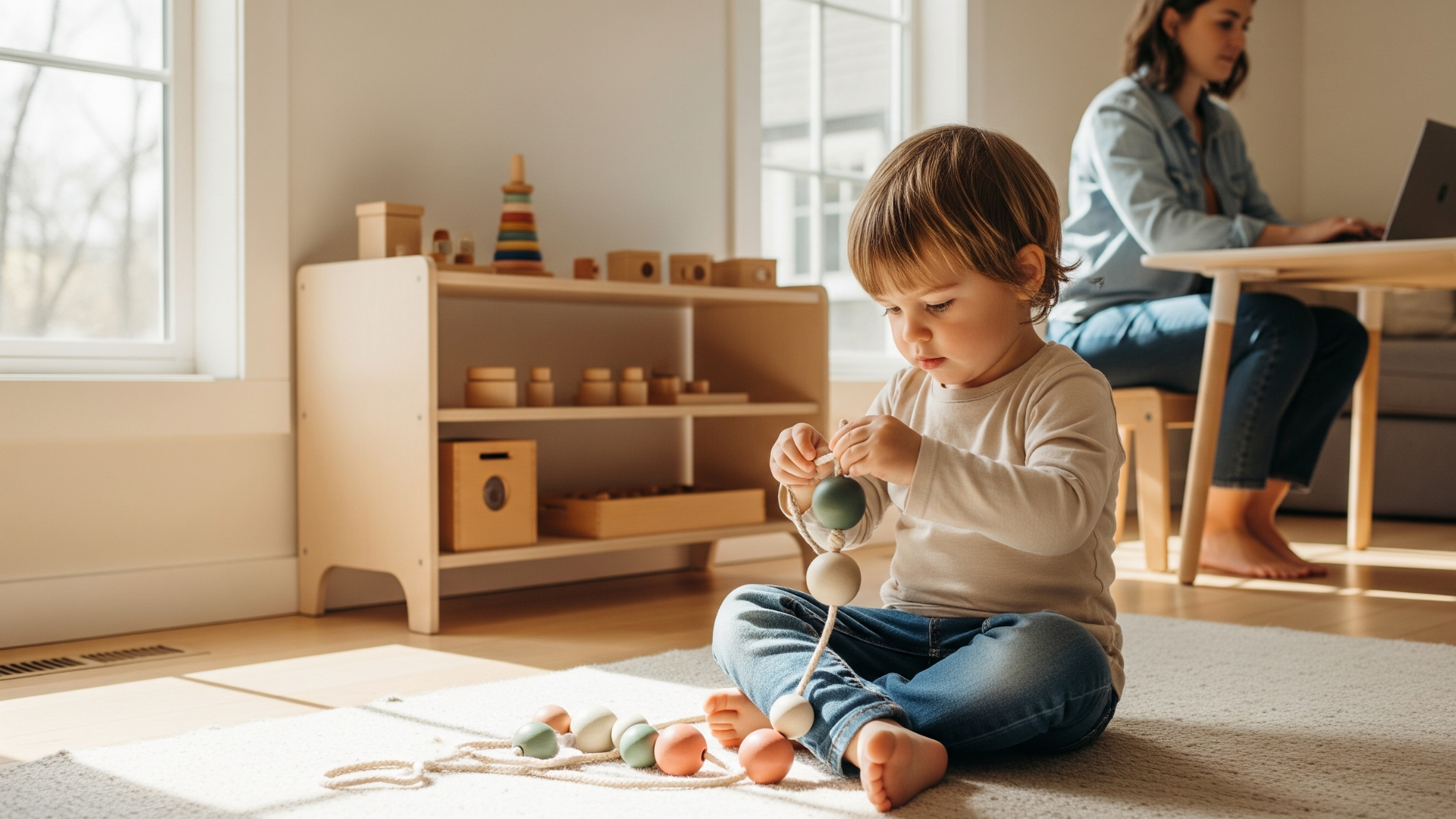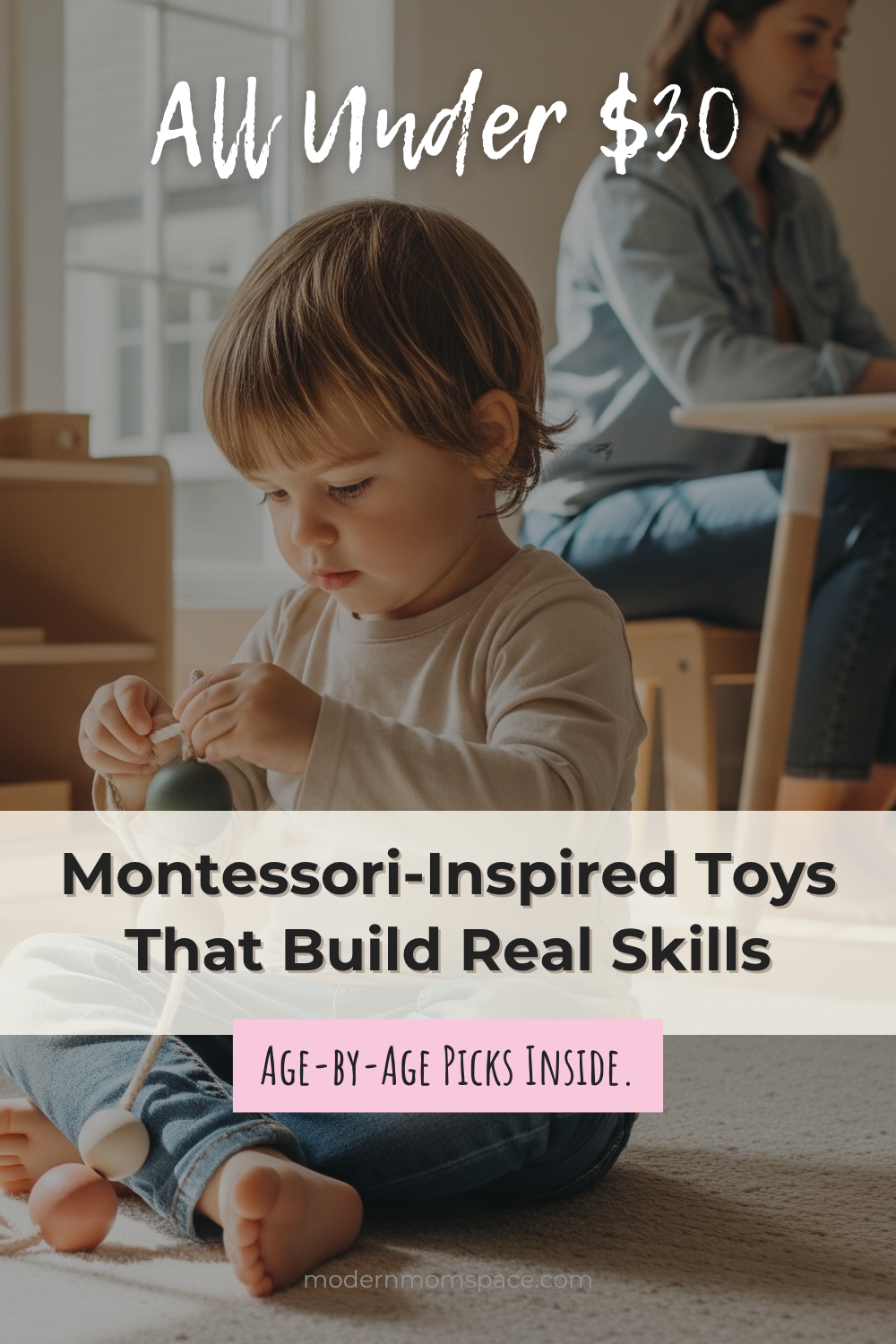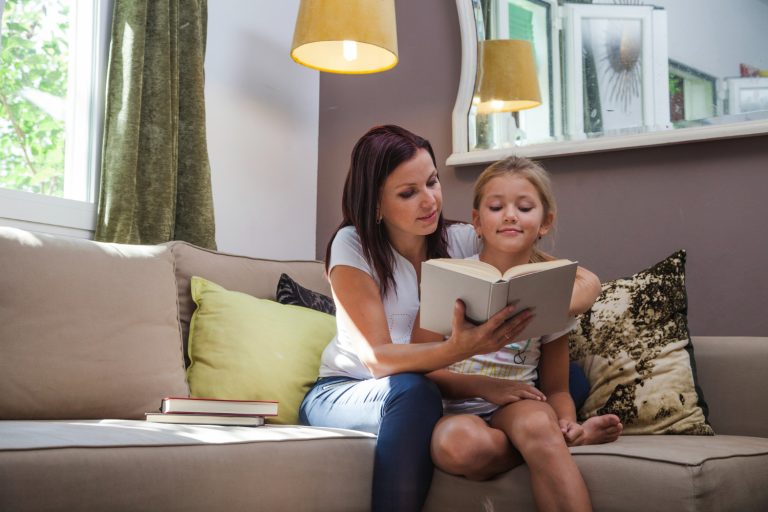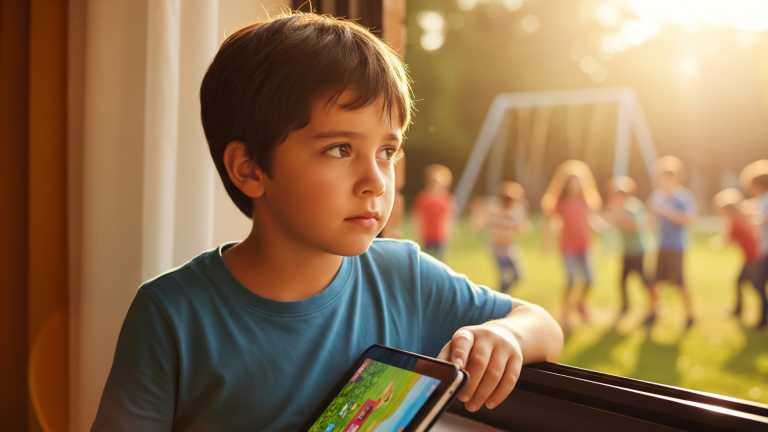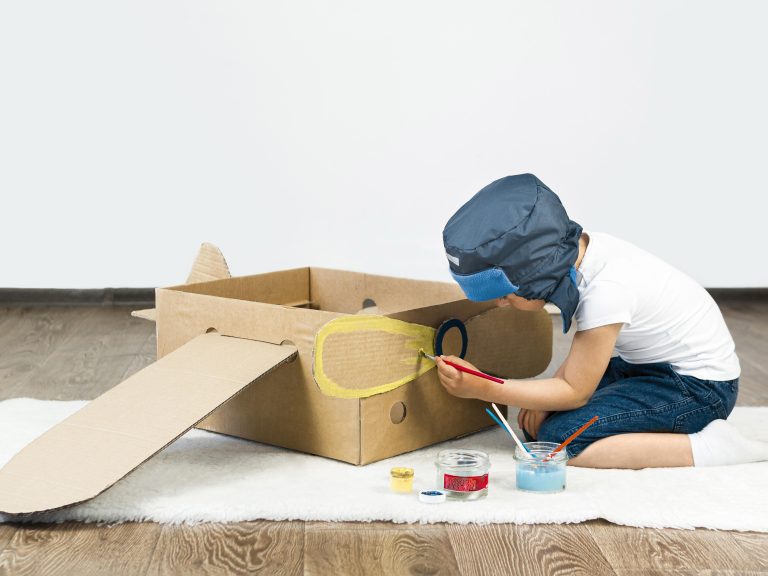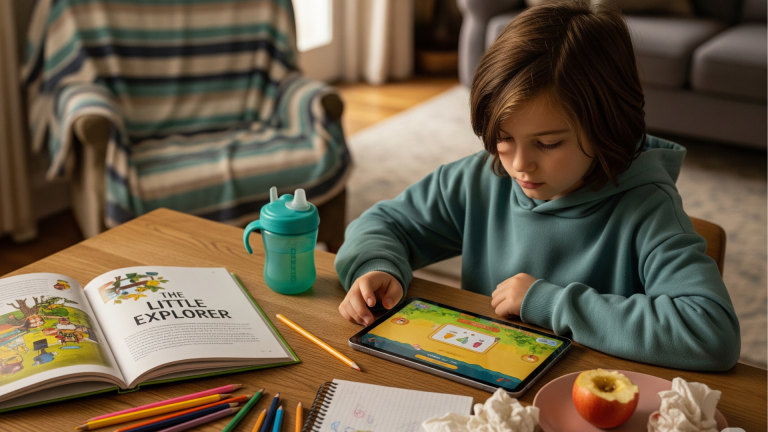Budget-Friendly Montessori-Inspired Toy Picks Under $30 (By Age Group)
Skip the Overwhelm. These Toys Actually Do What They Promise.
You’ve probably been there—standing in a toy aisle (or scrolling Amazon at midnight), wondering if this toy will actually keep your kid busy and help them learn something. Meanwhile, your living room looks like a plastic explosion, and your toddler is still obsessed with your phone.
This list cuts through the noise.
Every toy below is:
And it’s sorted by age so you don’t waste time figuring out what fits.
Age 1–3: For Toddlers Who Chew Everything and Still Want to Learn
These toys are for the chaos years—when kids are curious, everything goes in the mouth, and you’re just trying to buy 10 minutes of peace. These picks encourage fine motor skills, color recognition, and solo play… all without batteries or setup.
Option 1: Melissa & Doug First Bead Maze
For toddlers who love to twist, spin, and stay busy while you finally drink your coffee warm.
This classic bead maze helps little hands develop fine motor skills and hand-eye coordination, all through sensory-rich, screen-free play. The suction cups stick to high chairs or tables—so it stays put and actually gets used.
“We bought this for our 7-month-old post-surgery. It kept her engaged every day. The suction is amazing, and the quality is top notch.”

Option 2: Yetonamr Montessori Stacking Toy
For toddlers who love to stack, sort, and make piles of everything—on repeat.
With chunky wooden pieces sized for toddler hands, this toy teaches color recognition, shape matching, and problem-solving. Parents say even sensory-sensitive kids love it—and it holds up to rough use.
“My toddler has sensory issues and short focus. This toy keeps him engaged longer than anything else. Worth every cent.”
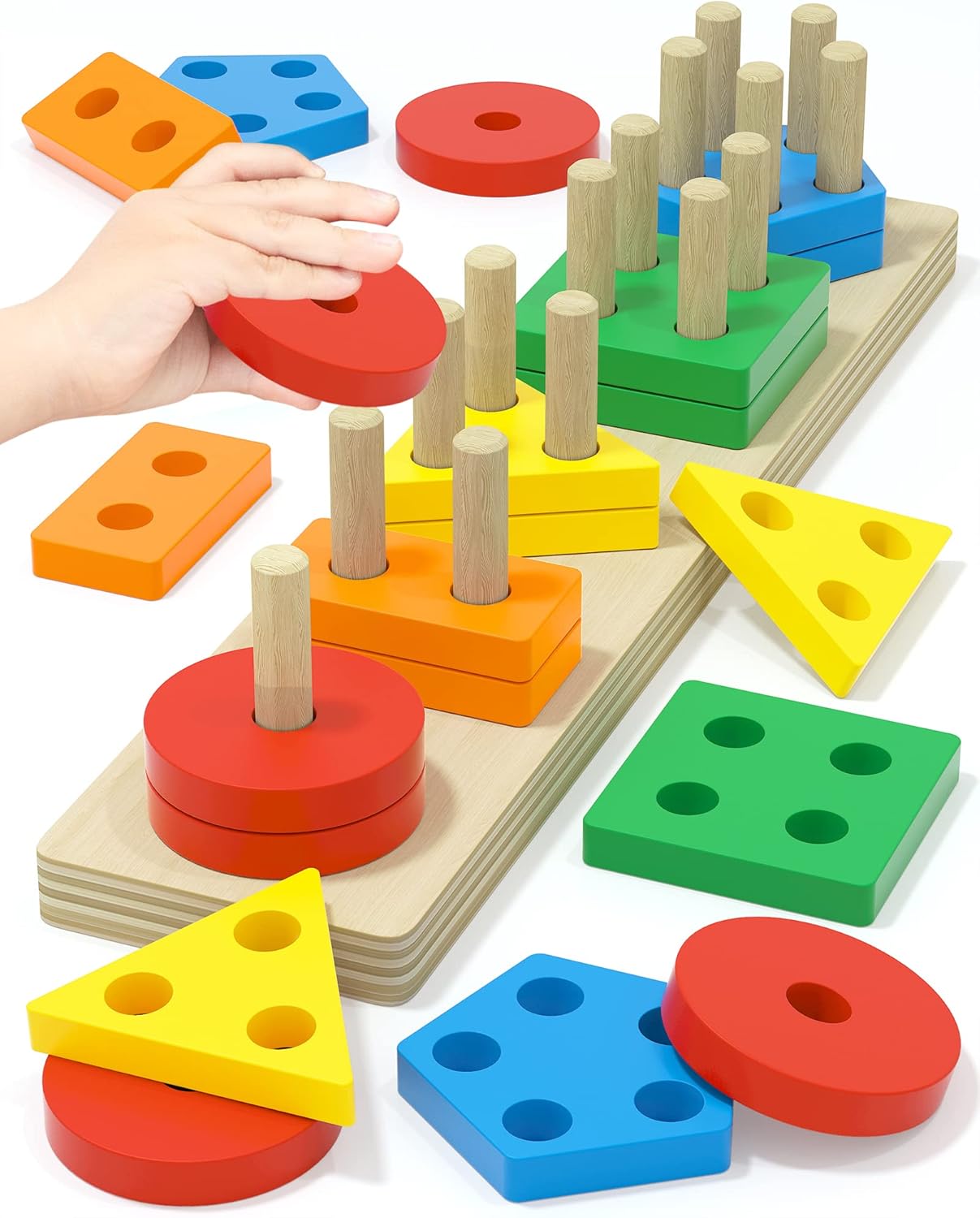
Can’t Decide?
Ask yourself:
Either way, you’re getting a toy that builds real skills—without batteries, screen time, or more plastic clutter.
Age 3–5: For Preschoolers Who Want to Do It Their Way
Preschoolers want control. They want to do it themselves. And if it doesn’t feel like play? They’re out. These toys hit that sweet spot: they build real skills but still feel like fun. Bonus? They’re screen-free, mess-free, and give you time to breathe.
Option 1: Melissa & Doug Primary Lacing Beads
For kids who love threading, patterning, and doing it over and over again.
Big, colorful wooden beads + sturdy laces = one of the best fine motor activities out there. Whether your child is learning patterns, colors, or just working on focus, this set delivers. Everything stores in the wooden box, so it’s easy to clean up too.
“Great activity for preschoolers! My kids practice colors, shapes, and patterns without even realizing they’re learning.”
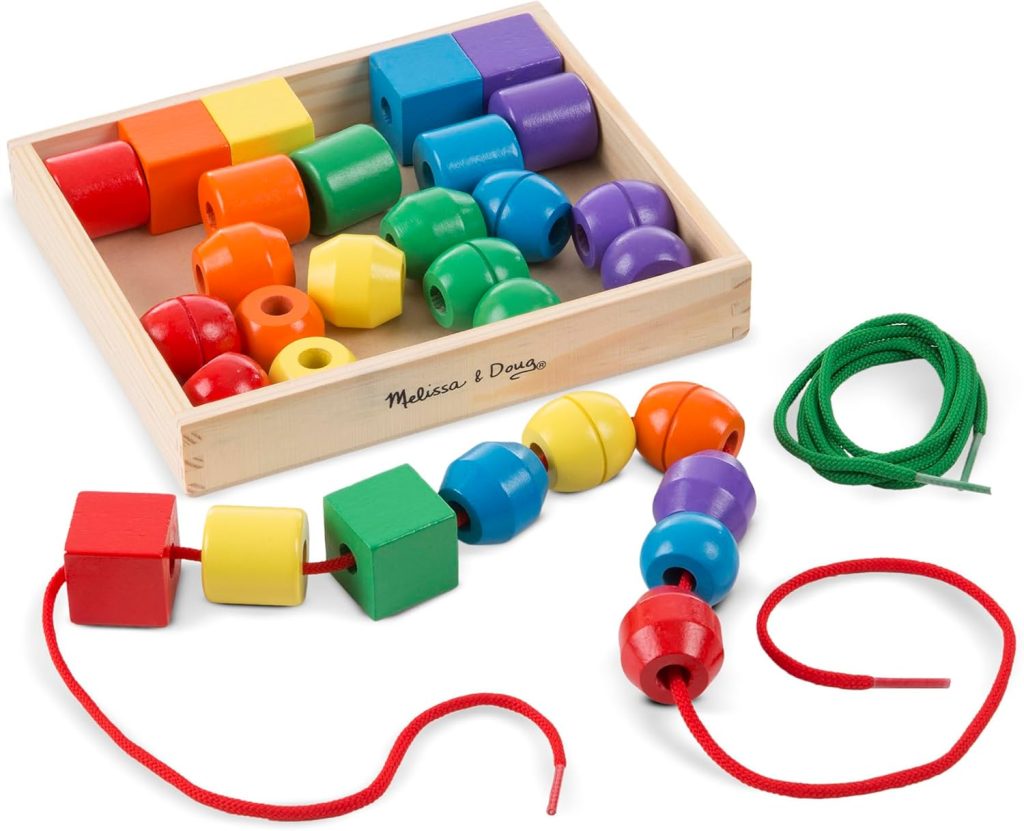
Option 2: Learning Resources Mini ABC Pops
For kids just starting letters—and parents who want to sneak in literacy without pressure.
This popsicle-themed alphabet set turns learning into a matching game. With 26 pairs of uppercase/lowercase letters and picture cues, it’s a fun way to reinforce phonics and vocabulary while building fine motor skills.
“My 3-year-old can’t read yet but has fun matching letters to pictures. My 5-year-old uses it to practice sounds. Great value!”
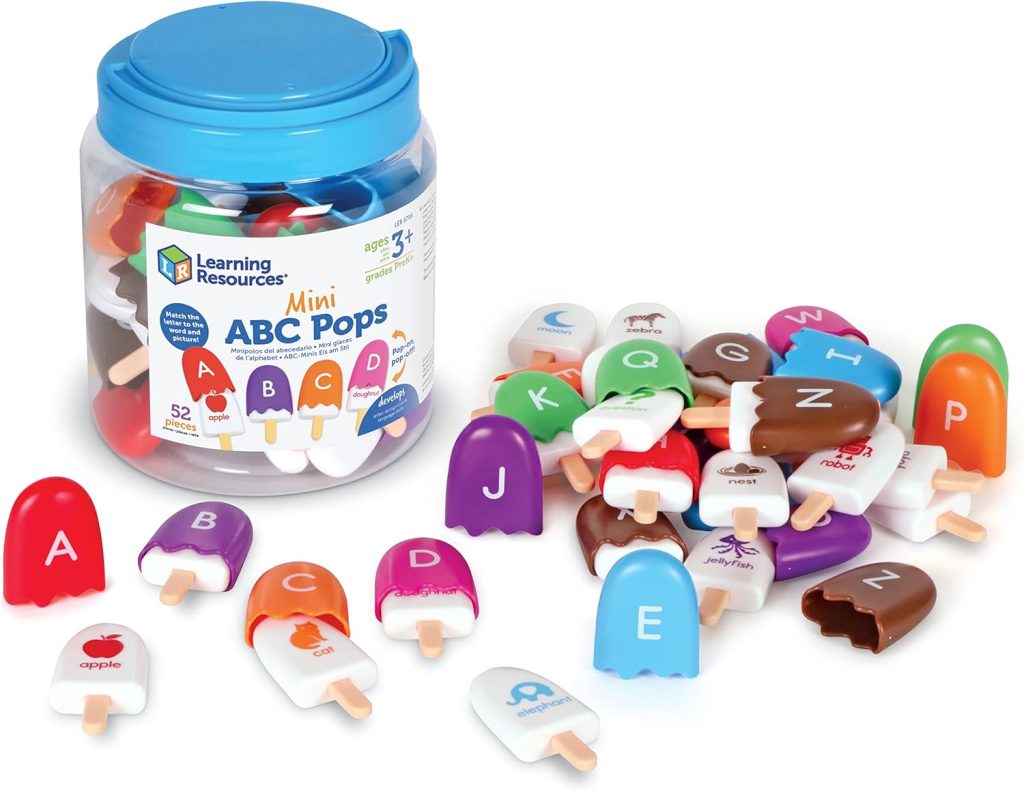
Which One Fits?
Both encourage independence and early learning—Montessori style.
Quick Note Before the Next Section
By age 6, most Montessori classrooms shift away from “toys” and toward real-world tools, nature work, and practical life skills. But at home? Most of us still need something to keep our kids learning and occupied without screens.
These budget-friendly picks stay true to Montessori principles:
hands-on, open-ended, and focused on real learning—not flashing lights or busywork.
Age 5–8: For Kids Who Crave Challenge but Still Want to Play
At this stage, kids want toys that feel more like a game and less like “learning.” The trick? Give them something hands-on that builds real thinking skills—without them realizing it’s educational.
Option 1: Learning Resources STEM Explorers Pixel Art Challenge
For kids who love puzzles and figuring things out on their own.
This STEM kit gives kids 10 double-sided design challenges they solve using colorful foam tiles. It builds spatial awareness, logic, and focus—and it’s engaging enough to keep them off screens. Bonus: no magnets, so it’s safe for younger siblings too.
“My 4-year-old is hooked. She does it solo for long stretches, and I love that it grows with her. Great value and no screens!”
Works great for early learners around age 4 and still holds up as they hit age 7 or 8 thanks to the range of pattern challenges.
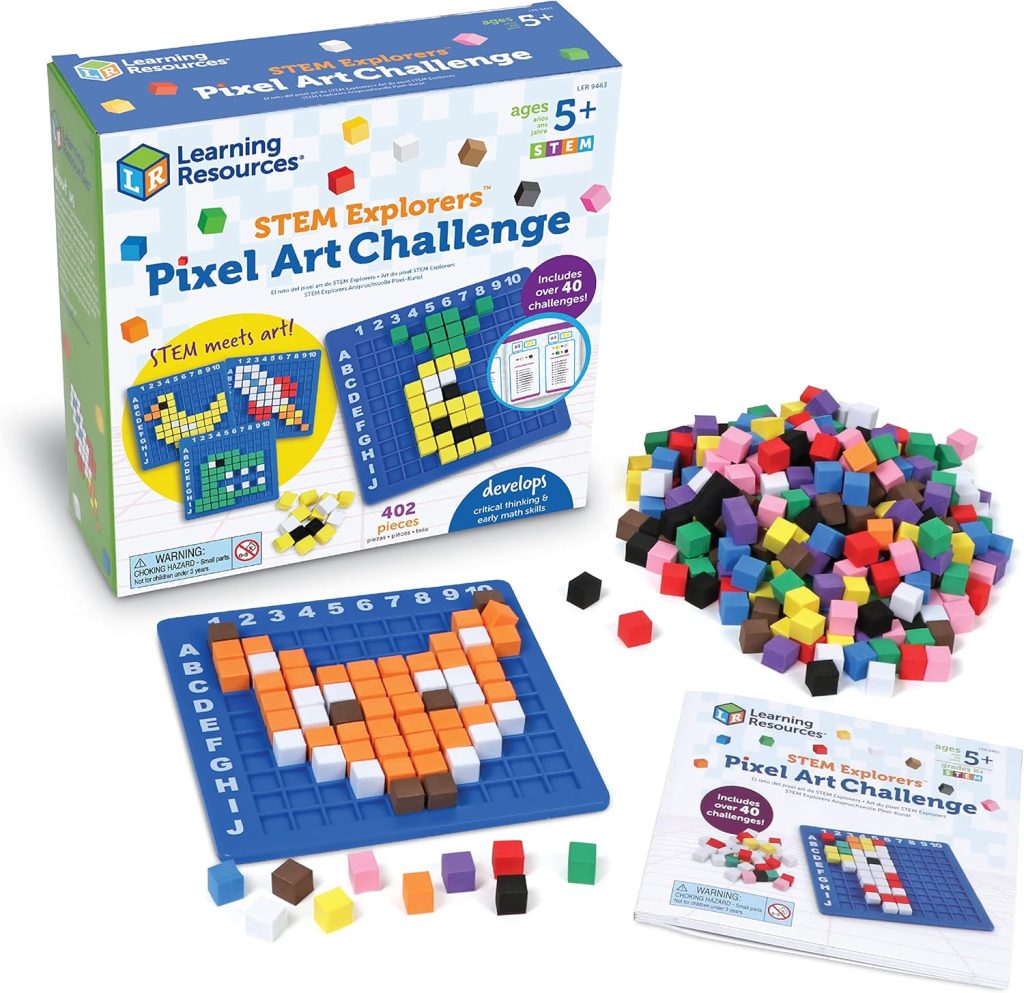
Option 2: Melissa & Doug Self-Correcting Alphabet Puzzle
For kids who need extra letter practice—but hate worksheets.
This 52-piece wooden puzzle set helps kids master the alphabet by matching letters with illustrated objects (A = Apple, etc.). It’s self-correcting, so kids can play independently without needing constant help—and the wooden box keeps it all neat.
“We got this for a flight and my 4-year-old was totally focused. It’s colorful, sturdy, and makes letter learning fun.”
Great for preschoolers and early elementary kids who need repetition in a way that feels like play.
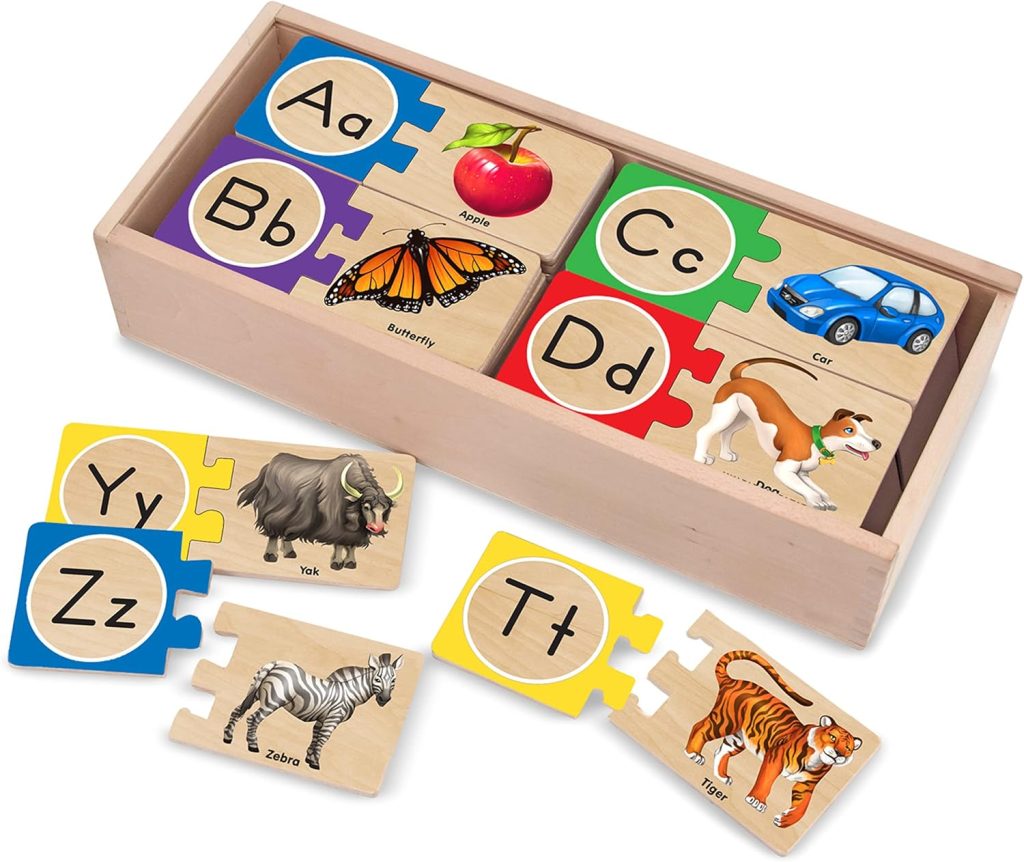
Which One Fits?
Both build independence and confidence—without nagging or screen time.
One More Note Before the Older Kids
By age 8, kids don’t need “toys” in the traditional sense—and Montessori philosophy at this stage leans into real work, creative projects, and skill mastery. But the right game or activity can still build critical thinking, focus, and independence—without a screen in sight.
These picks challenge older kids with logic, problem-solving, and STEM-style design. And yes—they’re all still under $30.
Age 8–12: For Kids Who Want a Challenge (and Won’t Tolerate Boring)
Option 1: ThinkFun Gravity Maze – Falling Marble Logic Game
For kids who like to build, tinker, and beat their own brain.
This isn’t just a toy—it’s a full-on logic puzzle disguised as a marble run. Kids build paths to guide the marble through increasingly complex challenges, learning spatial reasoning and problem-solving as they go. It’s Montessori-style focus meets pure fun.
“My 10-year-old is obsessed. It’s screen-free, engaging, and challenging enough that even I enjoy playing with him.”

Option 2: Learning Resources Math Island Addition & Subtraction Game
For kids who say they hate math—but love a good board game.
This fast-paced game turns basic arithmetic into a playful challenge. Kids roll dice, solve equations, and avoid the erupting volcano while building math confidence—without realizing they’re basically doing drills. It’s great for family game night or homeschool.
“My students beg to play this. It’s the only math game where they want to go backward just to launch the dice.”
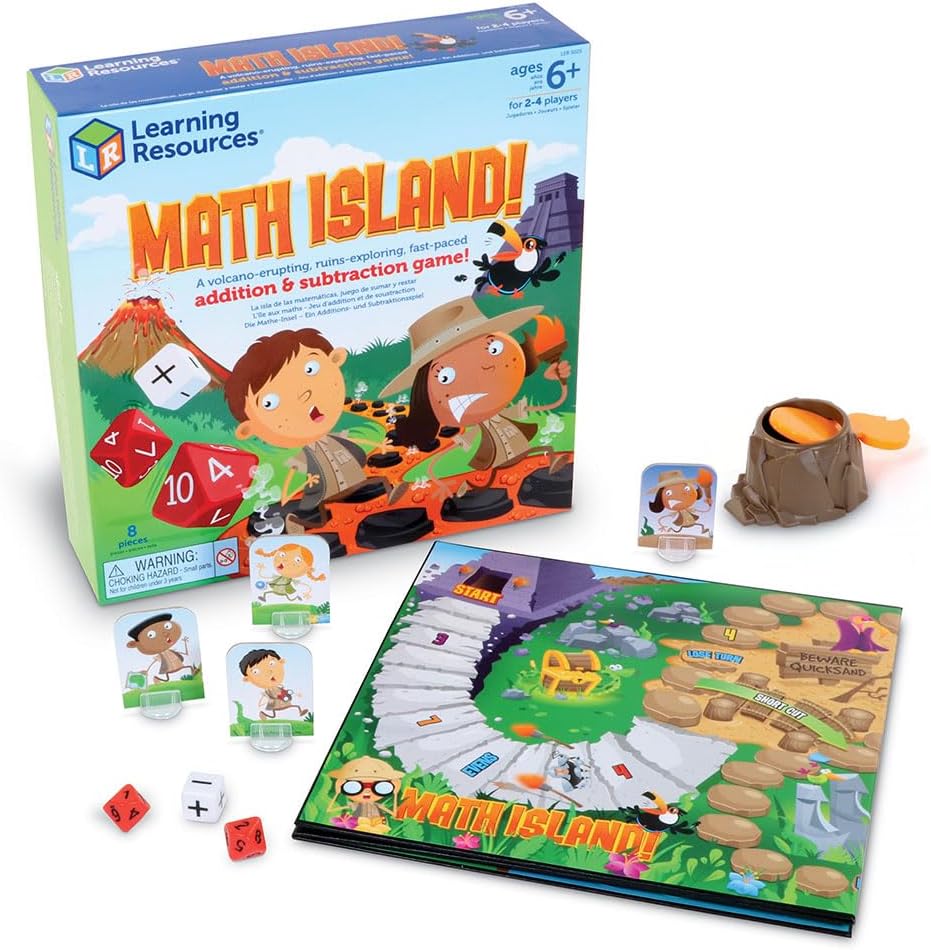
Which One Works for Your Kid?
Both build real thinking skills—and both beat another round of Roblox.
Final Thoughts: Less Clutter, More Learning
You don’t need shelves of expensive toys to follow Montessori at home.
You just need a few well-chosen, budget-friendly tools that encourage focus, independence, and real engagement.
If you’re using these toys to reduce screen dependence at home, this guide on raising kids in the digital age offers a full strategy beyond just toy swaps.
Save it. Share it. Send it.
Found this helpful? Save this article. Share it with your mom group.
Or send it to a parent who’s tired of the screen-time battles and just wants toys that actually help.

